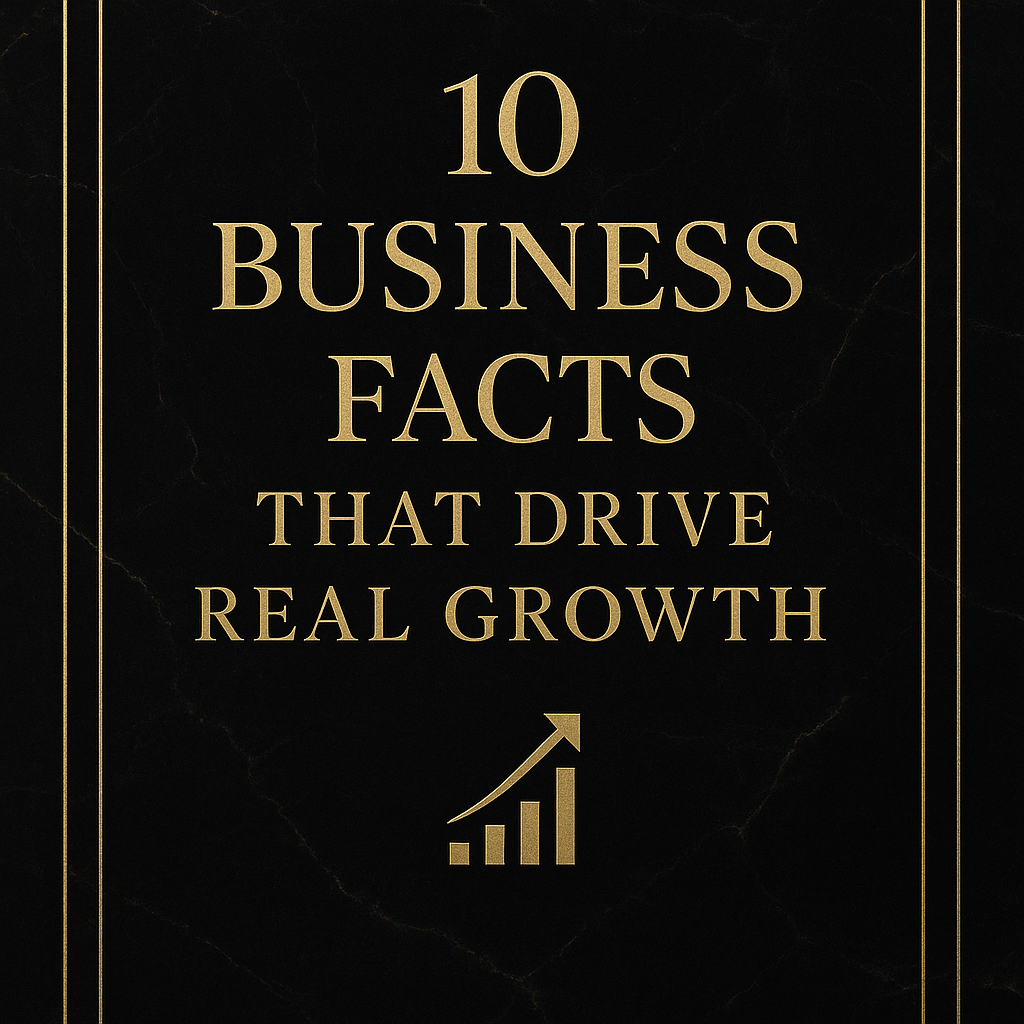
The 10 Business Facts Most People Learn Too Late
Share
The 10 Business Facts Most People Learn Too Late
Stop guessing. Learn 10 counterintuitive facts about growth, pricing, retention, content, and brand that actually move revenue—without hype.
Excerpt: Most “tips” are noise. These ten facts—about pricing, retention, velocity, content, and brand—explain why some businesses scale while others stall.
1) Profit moves fastest when you fix price and mix
Most founders chase more “eyeballs” and bigger volume. In many models, a small pricing improvement or a smarter product mix outperforms a huge sales push. Why? Margins compound. A 2–5% uplift in average order value, attach rate, or upsell acceptance can beat a 20% volume spike once fulfillment, payment fees, and support are counted. Translation: before you hunt new customers, tighten your offer, tiers, and attach logic.
2) Retention is the silent engine behind every “overnight” success
Acquisition gets applause; retention builds empires. If customers stay longer, every channel becomes cheaper and every experiment gets easier. Improve first-value time, reduce friction in the second session, and build a simple “come back” loop (email + remarketing + in-product nudge). Churn is not a metric; it’s a story about unmet expectations.
3) Speed to first value beats feature count
Most products die in the first ten minutes of the first session. The winner is not the richest roadmap but the shortest path to one meaningful result. Cut setup steps, pre-fill defaults, and let people “use first, fine-tune later.” You can always add complexity after the win.
4) Distribution outperforms invention
A great product with weak distribution loses to a good product with strong distribution. Find one repeatable channel that matches your buyer’s intent (search, partnerships, affiliates, creator collabs, or niche communities), then standardize assets, offers, and follow-ups. Consistency beats clever.
5) Brand is stored momentum
Brand isn’t a logo; it’s a memory structure: who you’re for, what you promise, and how reliably you deliver. Strong brands lower CAC, increase conversion, and create pricing power because buyers “pre-decide.” If your brand can’t be summarized in one sentence by a stranger, you don’t have one—yet.
6) Most “content” never aligns with search intent
Traffic without intent is a vanity metric. Content that converts answers one job: a problem, a comparison, a checklist, or a template someone needed five minutes before buying. Write for real searches (“how to choose pricing tiers,” “retainer vs. project contract,” “B2B onboarding email examples”), not for broad topics. Specific terms, concrete outcomes.
7) Simplicity scales; complexity leaks profit
Every extra plan, edge case, or custom rule adds entropy: bugs, training time, refunds, and slow decisions. Tighten your offer. Standardize deliverables. Productize the 80% your best customers love and say no to the messy 20% that drains you.
8) Cash flow is a skill, not an outcome
Growth doesn’t kill companies; cash timing does. Bill upfront where you can, offer annual plans with iron-clad retention hooks, and align payment schedules with delivery milestones. The healthiest businesses run on predictable receivables and boring dashboards.
9) Small, consistent experiments beat big, heroic bets
Your market will tell you what works—if you run clean tests. Change one thing at a time, measure with guardrail metrics (conversion, AOV, refund rate, LTV), and keep a written log. Repeatability is a moat.
10) Social proof multiplies when it’s specific
“Loved by thousands” is wallpaper. “Used by boutique agencies to cut proposal time by 62 minutes” gets believed. Show numbers, jobs-to-be-done, and before/after snapshots. Proof converts because it reduces the buyer’s risk.
Putting it together: a simple operating loop
Define one ICP. Clarify the promise. Shorten time-to-value. Standardize delivery. Price for margin, not applause. Build a retention spine. Then pour distribution on top. Most plateaus are not marketing problems; they’re offer and delivery problems wearing a marketing mask.
Light CTA
If you want practical frameworks you can apply in an afternoon, explore “The Visionary Business Bundle” and “AI-Powered Business: Automate, Scale, Profit” at vipresspublishing.com. No fluff—just repeatable systems.
